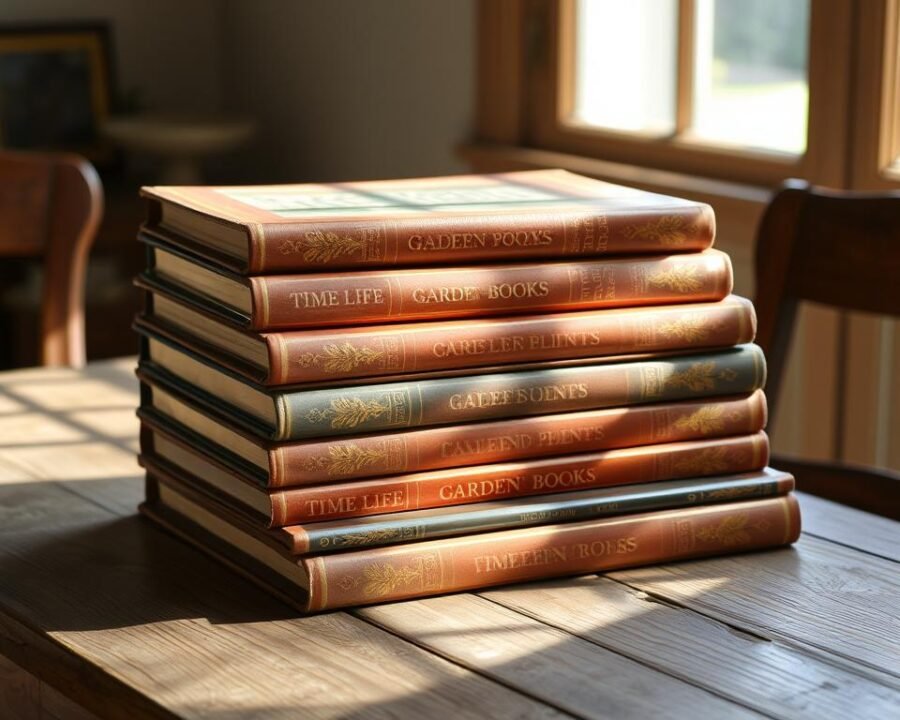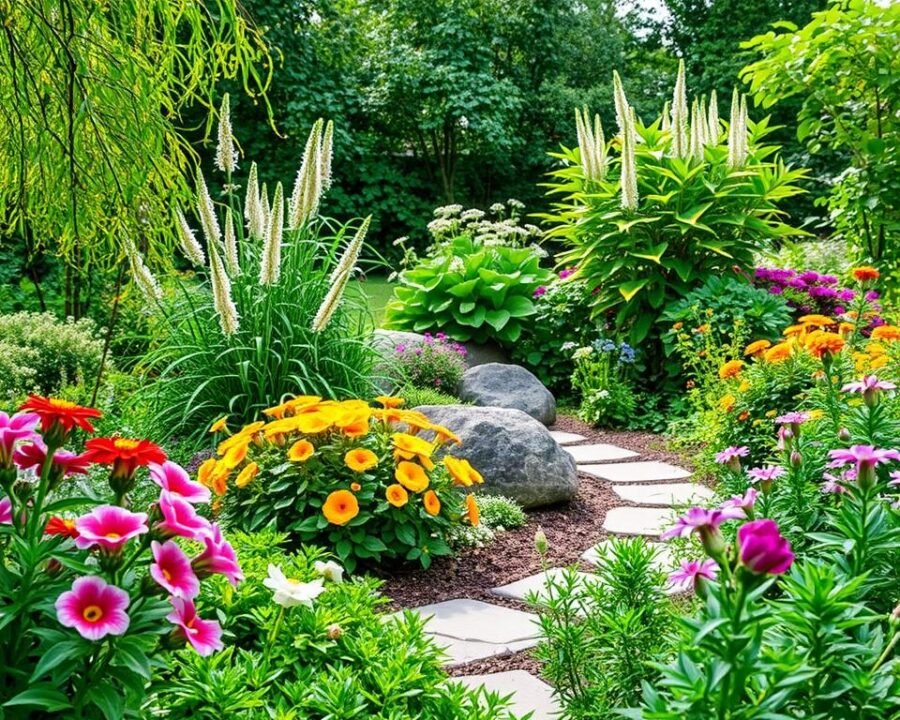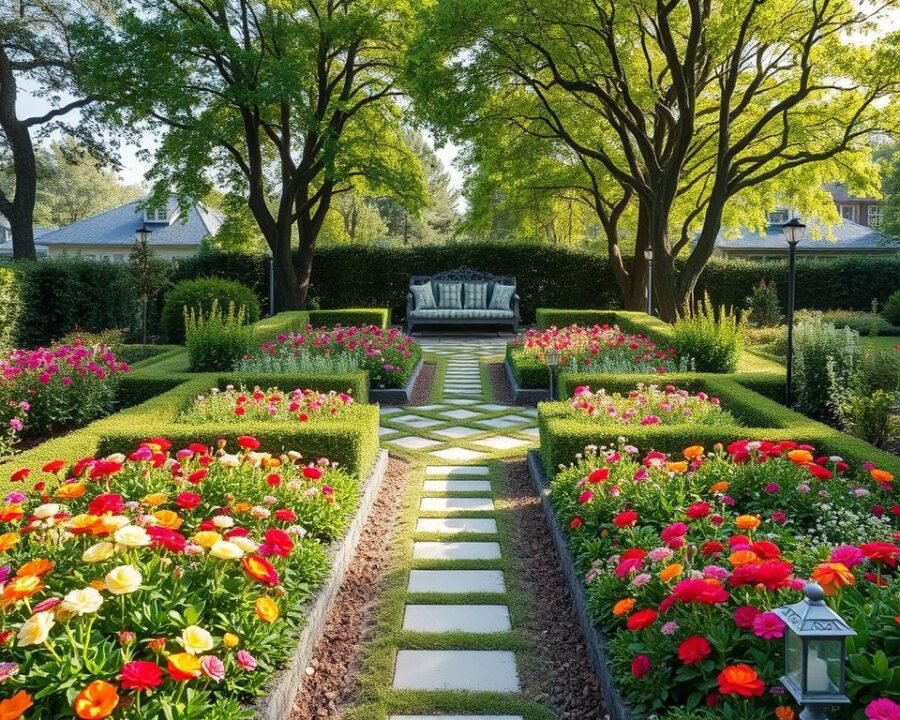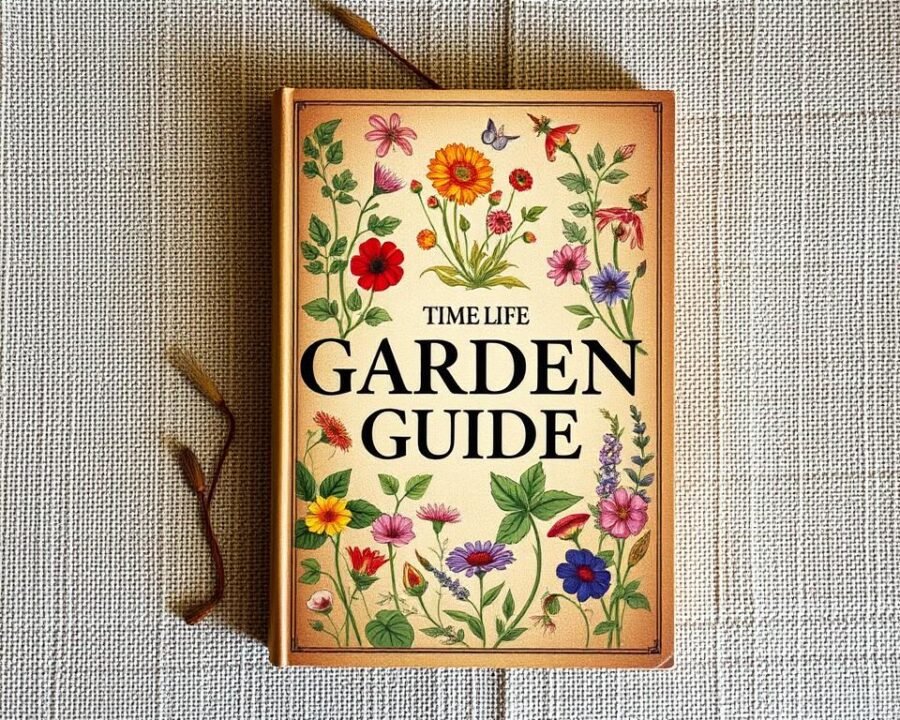We’re excited to share with you the wealth of knowledge contained within the Time-Life Books collection, particularly in their publication, “The Country Garden: Ideas for Gardening in a Natural Style.”
This treasure trove of gardening wisdom offers expert advice on creating a beautiful, natural garden that connects us with nature and enhances our overall well-being.
As we explore this comprehensive guide, we’ll delve into the history of Time Life’s garden publications and highlight key sections that provide master techniques for gardening.
Key Takeaways
- Discover the wealth of knowledge in the “Decorating Your Garden ‘Time Life’ PDF” guide.
- Learn how to create a natural and beautiful garden with expert advice.
- Explore the history of Time Life’s garden publications.
- Identify key sections in the guide for master gardening techniques.
- Understand the connection between gardening and overall well-being.
The Legacy of Time Life Garden Books
Time Life’s extensive collection of garden books has been a guiding light for gardening enthusiasts, offering a wealth of knowledge that spans decades. These publications have not only reflected the gardening practices of their time but have also shaped the way people approach gardening today.

History of Time Life’s Garden Publications
Time Life’s foray into gardening literature began with a series of books that covered various aspects of gardening, from basic principles to specialized garden designs. These publications were notable for their detailed guidance and beautiful illustrations, making them accessible to both novice and experienced gardeners. Over the years, Time Life continued to expand its gardening library, incorporating new techniques and ideas while maintaining a focus on the timeless principles of good gardening.
The historical context of these publications is crucial in understanding their impact. During the mid-20th century, gardening was becoming increasingly popular as a hobby, and there was a growing demand for comprehensive guides. Time Life responded to this demand by producing high-quality books that were both informative and visually appealing. These books became a staple in many gardeners’ libraries, offering master advice that remained relevant even as gardening trends evolved.
The Country Garden: Ideas for Gardening in a Natural Style
One of the key themes in Time Life’s garden books is the concept of the “country garden,” which emphasizes a natural and harmonious approach to gardening. This style is characterized by its use of native plants, informal design, and integration with the surrounding landscape. The idea is to create a garden that feels like a natural extension of the countryside, rather than a formal, structured space.
Gardening in a natural style, as advocated by Time Life’s publications, encourages gardeners to work with nature rather than against it. This approach not only results in beautiful gardens but also promotes biodiversity and sustainability. By adopting these principles, gardeners can create outdoor spaces that are both pleasing to the eye and beneficial to the environment. The health benefits of such an approach are also noteworthy, as being in nature has been shown to have positive effects on mental and physical well-being.
Why Time Life Garden Books Remain Relevant Today
Despite the passage of time, Time Life’s garden books continue to be valuable resources for gardeners. Their enduring relevance can be attributed to the timeless design principles and foundational gardening techniques they cover. These guides offer practical ideas that inspire creative solutions to modern gardening challenges, from seasonal planning to specialized garden spaces.
The seasonal approach detailed in these books aligns perfectly with today’s renewed interest in working with natural cycles. Whether it’s planning for spring planting or preparing for fall, these publications provide a framework that helps gardeners stay connected to the natural world. Moreover, the emphasis on harmony with nature is a principle that has become even more important in today’s environmentally conscious world.
In conclusion, the legacy of Time Life garden books is a testament to the enduring power of well-crafted gardening guidance. By providing a blend of timeless principles and practical advice, these publications have left a lasting impact on the gardening community. As we continue to seek ways to live in harmony with nature, the wisdom contained in these books remains as relevant and valuable as ever.
Understanding the “Decorating Your Garden ‘Time Life’ PDF”
Understanding the contents and utility of the “Decorating Your Garden ‘Time Life’ PDF” can elevate your gardening experience. This comprehensive guide is designed to help you navigate the world of garden decoration and design with ease.

What’s Inside the Time Life Garden PDF
The “Decorating Your Garden ‘Time Life’ PDF” is a treasure trove of gardening wisdom, offering insights into various aspects of garden design and maintenance. It includes detailed information on garden photography techniques, helping you visualize and plan your garden effectively.
Inside, you’ll find a wealth of information on garden design principles, plant recommendations, and master gardening advice tailored to different climates and spaces. The guide is rich in nature-inspired ideas, ensuring your garden is both beautiful and in harmony with the environment.
Key Garden Design Principles from Time Life
The Time Life garden guide emphasizes several key design principles that are crucial for creating a harmonious and aesthetically pleasing garden. These include understanding your garden’s natural conditions and adapting your design accordingly, a concept that requires a little bit of planning and observation.
To make sure your garden thrives, the guide provides advice on selecting the right plants, designing pathways, and incorporating focal points. It encourages gardeners to blend traditional wisdom with contemporary practices, creating a unique and personalized garden space.
How to Navigate and Use the PDF Effectively
Navigating the “Decorating Your Garden ‘Time Life’ PDF” efficiently is key to unlocking its full potential. The guide is structured with a comprehensive table of contents, index, and cross-references, allowing you to quickly locate the information you need.
To get the most out of this resource, we recommend creating mood boards and design plans based on the garden photography and design principles presented. This will help you apply the timeless wisdom in the guide to your contemporary garden challenges, ensuring your garden is both beautiful and functional.
Planning Your Garden Layout Using Time Life Methods
To create a garden that is both aesthetically pleasing and harmonious with its surroundings, the Time Life principles provide invaluable insights. The key to a successful garden design lies in understanding and working with your unique outdoor space.
Assessing Your Space and Natural Conditions
Before you begin designing your garden, it’s crucial to assess the natural conditions of your space. This involves observing the sunlight patterns, soil quality, and existing flora. Time Life’s approach emphasizes the importance of understanding these elements to create a garden that thrives. By doing so, you can determine the best placement for different garden features and plant species.
For instance, noting the areas that receive full sun, partial shade, or full shade will help you choose the right plants for each spot. Similarly, assessing the soil type and its drainage characteristics will guide your selection of plants and amendments. As Time Life suggests, this initial assessment is fundamental to creating a balanced and sustainable garden ecosystem.

Creating Balanced Garden Zones
A well-designed garden is often divided into distinct zones, each serving a specific purpose. Creating balanced garden zones is about allocating space effectively for different activities and plantings. According to Time Life, this could include areas for relaxation, entertainment, and cultivation.
The process involves identifying the primary functions you want your garden to serve and then allocating space accordingly. For example, you might dedicate one area to a vegetable garden, another to a flower garden, and a third to a seating area. By doing so, you create a functional and visually appealing garden that meets your needs.
As noted by gardening experts, “A garden is not just a collection of plants; it’s an outdoor room that should be designed with both beauty and function in mind.” This philosophy is central to the Time Life approach, which advocates for a thoughtful and multi-faceted garden design.
“A garden is a love song, a duet between a human being and Mother Nature.” – Jeff Cox
Incorporating Pathways and Focal Points
Pathways and focal points are essential elements in garden design, as they guide visitors through the space and create visual interest. The Time Life method emphasizes the importance of pathways in creating a sense of journey and discovery in the garden.
When designing pathways, consider using natural materials such as stone, gravel, or wood chips, which blend seamlessly into the garden environment. The width and curvature of pathways can also influence the pace at which visitors explore the garden. For instance, a winding path encourages a leisurely stroll, while a straight path invites a more direct journey.
Focal points, such as sculptures, water features, or specimen trees, draw the eye and create visual anchors within the garden. By strategically placing these elements, you can create a sense of depth and visual interest. As Time Life suggests, the effective use of pathways and focal points can transform your garden into a dynamic and engaging outdoor space.
To further enhance your garden’s design, consider the role of photography in assessing and planning your garden layout. Capturing your garden from different angles and at various times of day can provide valuable insights into how light and shadow interact with your garden’s features. This can help you identify optimal locations for pathways and focal points.
Essential Garden Elements from the Time Life Approach
When it comes to creating a beautiful garden, the Time Life approach emphasizes the importance of incorporating essential elements that enhance both functionality and aesthetic appeal. These elements work together to create a harmonious and inviting outdoor space that reflects your personal style and complements your home.
Water Features and Their Placement
Water features are a crucial aspect of garden design, as they add visual interest, create soothing sounds, and attract wildlife. The Time Life guide provides valuable information on planning a water garden, selecting appropriate plants, and maintaining water features.
When planning a water garden, consider the size and location of your pond or water feature. It’s essential to choose a spot that receives the right amount of sunlight and is proportionate to the size of your garden. The Time Life guide suggests considering the natural flow of water and the surrounding landscape when deciding on the placement of your water feature.
| Water Feature Type | Size Consideration | Plant Selection |
|---|---|---|
| Pond | Large gardens | Water lilies, cattails |
| Fountain | Small to medium gardens | Mosses, ferns |
| Stream | Medium to large gardens | Iris, horsetail |
Structural Elements: Walls, Fences, and Borders
Structural elements such as walls, fences, and borders play a vital role in defining the layout and character of your garden. They provide boundaries, support climbing plants, and can be used to create separate areas within the garden. The Time Life approach offers ideas for using these elements to enhance your garden’s aesthetic appeal.
Walls can be used to create a sense of enclosure, while fences can add a decorative touch. Borders, whether planted or hardscaped, help to define different areas of the garden and guide the visitor’s eye through the space.
- Walls: brick, stone, or concrete
- Fences: wood, metal, or vinyl
- Borders: planted with flowers, shrubs, or herbs
Garden Furniture and Decorative Accents
Garden furniture and decorative accents are the finishing touches that make your garden a welcoming and enjoyable space. The Time Life guide provides photography inspiration and advice on selecting furniture and decorative elements that complement your garden style, from classical statuary to contemporary art pieces.
When choosing garden furniture, consider the style and material that will withstand the elements and complement your garden’s aesthetic. Decorative accents such as flowers in containers, hanging plants, and seasonal decorations can add color and interest to your garden throughout the year.
To create inviting outdoor “rooms,” we can use carefully selected furniture groupings that encourage relaxation and conversation, effectively extending our home living space into the garden world.
| Furniture Style | Material | Complementary Elements |
|---|---|---|
| Modern | Metal, recycled plastic | Contemporary art, minimalist decor |
| Traditional | Wood, wicker | Classical statuary, vintage decor |
| Rustic | Reclaimed wood, stone | Natural elements, earthy tones |
Plant Selection Strategies for a Time Life-Inspired Garden
The art of crafting a beautiful and thriving garden, as advocated by Time Life, begins with choosing the right plants. This foundational step sets the stage for a vibrant outdoor space that reflects the timeless principles of gardening excellence. In this section, we will explore the strategies for selecting plants that will make your garden flourish.
Choosing Trees as Anchoring Elements
Trees serve as the backbone of any garden, providing structure, shade, and a sense of permanence. When selecting trees for your Time Life-inspired garden, consider factors such as climate, soil type, and the mature size of the tree. We recommend choosing trees that are well-suited to your local environment to ensure their longevity and health.
Key Considerations for Tree Selection:
- Climate compatibility
- Soil type and quality
- Mature tree size and shape
- Maintenance requirements
By carefully selecting trees that meet these criteria, you can create a solid foundation for your garden. For instance, oak trees are known for their durability and can become a focal point in your garden, while smaller trees like dogwoods can add seasonal interest without overwhelming the space.
Incorporating Perennials for Year-Round Interest
Perennials are a crucial element in a Time Life-inspired garden, offering a dynamic display of color and texture throughout the growing season. As perennials “walk, then crawl, then run,” reaching their full potential in their third year, patience is key. We will discuss how to incorporate perennials to achieve year-round interest.
| Perennial Type | Season of Interest | Height and Spread |
|---|---|---|
| Peony | Spring | 2-4 feet tall, 1-3 feet wide |
| Daylily | Summer | 2-4 feet tall, 1-2 feet wide |
| Aster | Fall | 1-3 feet tall, 1-2 feet wide |
By mixing perennials with different flowering times, you can create a garden that evolves throughout the seasons, providing continuous visual interest.
Using Annuals for Seasonal Color
Annuals play a vital role in adding bursts of color and vibrancy to your garden. The Time Life approach emphasizes using annuals strategically to fill gaps in perennial beds, create dramatic displays, and experiment with new color schemes without long-term commitment.
Benefits of Using Annuals:
- Flexibility in design and color
- Ability to fill gaps in perennial beds
- Opportunity to try new combinations annually
- Enhanced seasonal interest
By incorporating annuals into your garden design, you can achieve a dynamic and engaging outdoor space that reflects the principles of Time Life gardening.
Creating Specialized Garden Spaces
Embracing the Time Life gardening philosophy, we can create a captivating cottage garden that thrives through the seasons. The Time Life guide offers a comprehensive approach to gardening, providing insights into the history, design principles, and benefits of various garden styles, including the charming cottage garden.
Cottage gardens have a rich history, evolving from practical spaces for food production to one of the most beloved garden styles worldwide. This transformation is a testament to the versatility and appeal of cottage gardens, which integrate a variety of flowering plants, herbs, and edibles to create a simple, yet vibrant display.
Designing a Cottage Garden
Designing a cottage garden involves more than just planting a mix of flowers, herbs, and vegetables. It requires an understanding of how to achieve a “planned informality” that makes these gardens so appealing. The Time Life guide provides master techniques for creating spaces that appear delightfully unplanned, yet are carefully designed to thrive.
The selection of plants is crucial in cottage garden design. A mix of perennials, annuals, herbs, and flowering shrubs is used to create the characteristic abundant look of cottage gardens. These plants not only provide beauty but also support health through their diversity, offering food, medicinal herbs, and flowers for cutting.
To adapt the cottage garden aesthetic to different climates and conditions, one must consider the specific needs and challenges of their yard garden situation. The Time Life guide offers practical advice on how to make this traditionally English garden style thrive in various environments.
The art of cottage garden design also involves understanding the science behind creating plant communities that thrive together. By incorporating structural elements such as picket fences, arbors, and raised beds, gardeners can provide the necessary framework for the exuberant plantings that characterize cottage gardens.
Furthermore, cottage gardens evolve over years and through the seasons, offering a different kind of beauty from spring bulbs to summer flowers to fall seed heads to winter structure. Incorporating water garden elements and hanging plants can add vertical interest and habitat diversity to this already rich garden space.
The Time Life approach to cottage gardens emphasizes creating spaces that welcome both human visitors and beneficial wildlife, making your garden part of a larger ecological landscape. By following the guide’s comprehensive information and tips, gardeners can create a captivating cottage garden that connects them to the natural world and gardening traditions of the past.
In conclusion, designing a cottage garden is a rewarding endeavor that combines beauty, utility, and a connection to nature. With the Time Life guide, gardeners have a valuable resource to help them create a thriving and charming cottage garden that reflects their personal style and complements their outdoor space.
